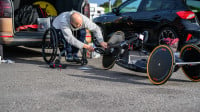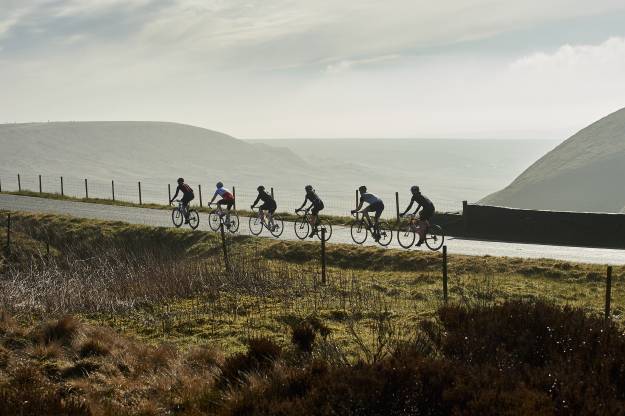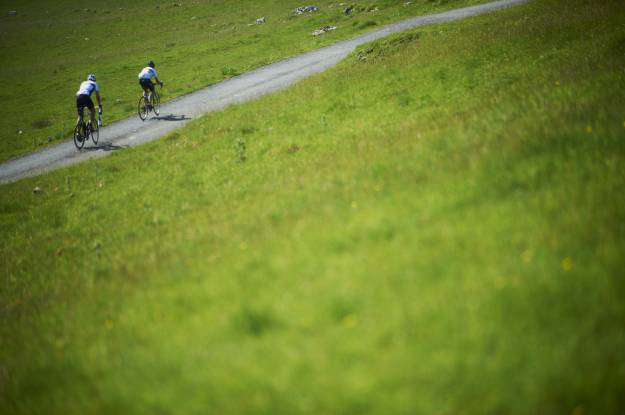Lower back pain is a common complaint amongst cyclists but what causes it and how should you go about curing it?
Not one cause
Assuming no prior injury issues, there are a number of factors that can contribute to riders suffering from lower back pain. These include incorrect bike fit, limited mobility or flexibility and insufficient levels of conditioning or fitness. More often than not, it is a combination of all of these factors and possibly others also.
Bike fit issues
Everything from saddle height to cleat set-up can be responsible. There are some common candidates but bike fit is complex and very personal. Trying to identify an issue yourself by trial and error can be a lengthy, frustrating and often fruitless process. If lower back pain is having a negative impact on your riding, a physiotherapist led bike fit could, in the long run, save you time and discomfort.
For amateur riders, who try to emulate the pros by slamming their stems and adopting extremely aggressive positions, this excessive saddle to bars drop can be stressful on the lower back. It takes a lot of time and effort to be able to sustain such a position and has to be adapted to gradually.
Excessive reach, the horizontal distance between the saddle and bars, can also lead to lower back discomfort. Conversely a too upright or cramped position can also cause lower back pain.
Pain on one side of your lower back only could be indicative of an imbalance or leg length discrepancy.
These are just a few potential causes and are by no means exhaustive. Even a physio led bike fit isn’t a guaranteed magic bullet but is definitely a step in the right direction on the road to finding your optimal pain free riding position.
It's rarely as simple as a tightness or imbalance
You will often read articles that will point the finger of blame straight away at the hamstrings or the hip flexors but it is rarely that simple. These areas are often tight in cyclists but the body has to be looked at as a whole. A general all over mobility routine and dedicated off the bike strength work should be part of all riders’ training plans whether they have lower back issues or not.
If you're able to ride, it's probably not your "core"
So called “core exercises”, which usually involve very small and precise movements to target a small muscle group in isolation, are often a waste of time and ineffective for many riders. They are really rehabilitation exercises and, if you can ride a bike and function normally in day to day life, aren’t really relevant to you. They will do absolutely nothing to alleviate back pain that develops 2-3 hours into a bike ride. Some riders do credit an improvement in lower back discomfort to such exercises but it’s often no more than a coincidence. Rest and time are far more likely to be the significant healers. Good trunk strength and stability is important in preventing and alleviating low back pain but this is more effectively developed with multi joint exercises and movements.
Lower back fatigue and pain can improve as you get fitter
The muscles of your lower back and trunk fatigue just like any other muscles. As you tire during a ride, your postural muscles can begin to struggle to hold your position. Additionally, they may be forced to take on additional load to compensate for your flagging legs. Many riders will find lower back issues improve as they build fitness and develop pacing strategies appropriate to their ability.
Don't pop pills
Taking anti-inflammatories can have a role in managing back pain through your GP or doctor, but really shouldn’t be self-prescribed for the prevention of low back pain when cycling. They tend to end up masking the real cause or issue and there is evidence that their use during endurance activities can be harmful.
Other tips for preventing back pain on the bike
Even on flat rides, get into the habit of standing out of the saddle regularly to stretch your back off a bit. Ask your ride mates to check if you are rocking excessively from side to side as you pedal as this can be indicative of a bike fit issue. Most of all though, be proactive and seek professional advice. Off bike conditioning work has been shown to not only make you a stronger rider but also to be beneficial for preventing injuries and can help some cases of lower back pain. The exercises within the British Cycling Mobilisation Routine – upper body and back and lower body would be an ideal starting point.










